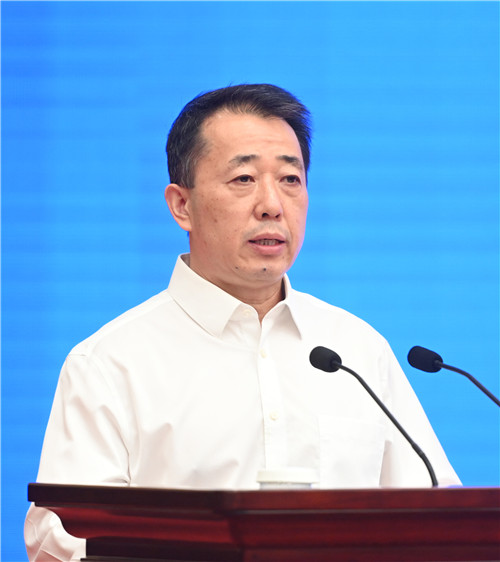Liu Bingjiang: China is world's fastest runner in air pollution control

Liu Bingjiang is a member of the National Committee of the Chinese People's Political Consultative Conference (CPPCC) and director-general of the Department of Atmospheric Environment, the Ministry of Ecology and Environment (MEE). [Photo/cppcc.gov.cn]
Liu Bingjiang, a member of the National Committee of the Chinese People's Political Consultative Conference (CPPCC), said China has made great achievements in air pollution control through multi-front efforts since the 18th National Congress of the Communist Party of China (CPC) in 2012.
China became the first developing country in the world to comprehensively fight against PM 2.5 particulate matter, a key air pollutant, by introducing an action plan in 2013, said Liu, also director-general of the Department of Atmospheric Environment, the Ministry of Ecology and Environment (MEE).
Great progress had been achieved in China, with emissions of sulphur dioxide (SO2) and nitrogen oxide (NOx) falling from more than 20 million tons in 2013 to a few million tons in 2021 and the annual average PM 2.5 concentration dropping by 56 percent.
Liu said this progress was achieved due to an emphasis on advancing ecological civilization by the CPC Central Committee and unprecedented measures to fight air pollution.
He highlighted the campaign to shift to gas- or electricity-powered heating from coal-powered for households in North China's rural areas. Data showed that more than 27 million households in the countryside have replaced coal-fired stoves and heaters.
Liu also mentioned the switch from transporting coal to delivering both coal and electricity as a positive factor. For example, 12 long-distance power transmission lines were put into use in 2017, reducing coal transport by 250 million tons. In addition, clean energy accounted for 64.5 percent of the energy consumption increase in the period from 2013 to 2021, while in contrast coal use reported zero growth.
He said that massive industrial restructuring contributed to the air quality improvement as China had phased out about 300 million tons of outdated overcapacity in the steel industry and cut coal overcapacity by 1 billion tons.
In addition, the robust campaign to shift freight transport from roads to railways, improved standards for vehicle emissions, and an increasing number of electric buses all helped reduce emissions in the transport sector.
Another contributor is the active efforts to reduce dust pollution from construction sites and prevent straw burning that often worsens air quality in farming seasons.
Liu said the MEE has organized more than 2,000 researchers to fully understand the causes, atmospheric transmission and dispersion of air pollutants, while a forecasting system developed together with the China Meteorological Administration has also boosted decision-making for pollution response.
He added that China will continue its precise and science-based air pollution fight in accordance with the law and promote cross-regional coordinated response to safeguard high-quality development and improve people's livelihoods.
Copyright © The National Committee of the Chinese People's Political Consultative Conference.
All rights reserved. Presented by China Daily.
京ICP备08100501号-1

